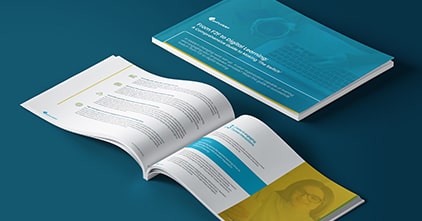With rapid changes in the market, it’s essential to move from static to flexible and adaptive. Reinvent your learning and development (L&D) by fostering agility in the workplace.

The world we live in today and everything in it is in a constant state of change— with technology advancing at an unprecedented rate, it’s vital to contend with the fast pace of digitalization. In this regard, professionals are expected to be able to easily adapt to their environment and flexible with the ever-changing trends there are in the market. In a study entitled “2018 Deloitte Global Human Capital Trends”, which surveys more than 10,000 HR and business leaders from over 140 countries, it was revealed that 88% of respondents believe that building the organization of the future is an “important” or “very important” issue. As the majority of organizations are becoming future-oriented, the same study also reports that although 94% of respondents believe that “agility and collaboration” are critical to their organization’s success, only 6% say they are “highly agile today.”
In an era of rapid change, failure to align with the needs of the market means that businesses are bound to experience disruption. In fact, the 2017 Deloitte Human Capital Trends Report found that new technologies and business models are disrupting more companies every year. Only 12% of the Fortune 500 companies from 1955 are still in business, and in 2016 alone, 26% fell off the list. Who knows how many more are to be affected if unable to keep up? Relevance is really of the essence even for businesses, and their training efforts as employees, in turn, should also advance. And this advancement calls for continual and applicable learning and development. But the question is, “How should organizations do this?” The answer is simple. Foster a culture of agility in the workplace.
Out with disruption, in with transformation
Modern L&D should keep up to speed with today’s needs. Fortunately, an agile learning approach responds to the possibility of future disruption. Getting employees to acquire and enhance their skills, and sharpen their ability to adapt prepares them not just for the environment they’re in, but also for times of adversity. Indeed, having an agile culture means that your workforce has the unique ability to quickly adapt to new technologies or business models. But how do businesses reinforce agility in their culture? What measures should be taken to introduce the value of agile learning? Here’s how!
Infuse
An agile culture prioritizes developing people results in constant learning, enhanced employee skill-sets, and a higher rate of innovation. It also requires making everyone involved realize the value of why continuously learning and developing of oneself is integral not just for himself but also to the organization and the industry. Thus, instill healthy communication in the workplace to regularly reinforce that learning is part of the organization’s strategic vision and that each employee is expected to enhance his area of expertise. Because in order to infuse a culture of learning in the workplace, proving the value of learning comes first.
Optimize
Businesses are adapting faster than ever as they move toward flatter organizational structures. Making things simpler and further optimizing them improves the agility of work and learning while spreading the span of control. If there are processes and methods that need “delayering” or tailoring, do so as needed by the organization. In this way, repetitive steps may be removed to avoid the cause of delays; promoting a steady flow of ideas and information.
Encourage
Introducing the workplace to a new culture comes with a lot of adjusting, therefore accept failure as a part of the process and encourage constructive criticism. With the speed of change in the business world, fostering an agile workplace starts with encouraging failure as employees are continuously adjusting and innovating alongside it.
“Failure,” in this sense, denotes positivity since it shows that employees are open to trying something new. L&D professionals may then help in determining what areas are in need of improvement and how they can succeed the next time around. In agility also comes evaluation— on what still needs to be adjusted or removed, what steps taken were successful and not, and how employees are doing in performance of their work. Change is never easy to readjust to, but allowing room for opinions to further innovate and a healthy exchange of suggestions bolsters growth.
Agile culture, agile workforce
Agility is not just limited to how employees perform their tasks, it’s also in how they value their own growth. Thus, challenge them to reach their highest potential and provide resources that may help them acquire new skills and hone their existing talents. Cultivating competent and talented individuals should also begin with the help of the organization itself so that they will always be set out to better themselves. After all, letting your employees grow helps your company grow too.




